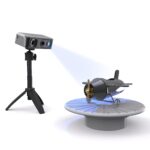Table of Contents:
1. Introduction to Three Dimensional Input Devices
2. Types of Three Dimensional Input Devices
3. Features of Three Dimensional Input Devices
4. Importance of Three Dimensional Input Devices
5. Applications of Three Dimensional Input Devices
6. Conclusion
1. Introduction to Three Dimensional Input Devices
Three-dimensional input devices are specialized hardware tools that capture and interpret data in a 3D space. Unlike traditional input devices like keyboards and mice, these devices are capable of understanding depth, motion, and spatial orientation. They are widely used in industries like gaming, design, healthcare, and virtual reality to enhance user experience and productivity
.2. Types of Three Dimensional Input Devices
There are several types of 3D input devices, each serving unique purposes:

a. 3D Mouse
A 3D mouse enables navigation through three-dimensional environments.
Commonly used in CAD (Computer-Aided Design) applications and virtual reality setups.
Features: Rotational knobs, joysticks, and pressure-sensitive buttons.

b. Motion Controllers
Detects hand and body movements to interact with virtual environments.
Widely used in gaming consoles like PlayStation VR and Oculus.
c. SpaceBall

A spherical device that senses pressure and direction to navigate 3D objects.
Used in engineering and architectural design for manipulating 3D models.
d. Data Gloves
Equipped with sensors that capture hand and finger movements.
Ideal for virtual reality environments, robotics, and motion capture.
e. 3D Scanner

Captures the shape and texture of physical objects to create 3D models.
Used in industries like animation, healthcare, and manufacturing.
f. Haptic Devices

Provide tactile feedback by simulating touch sensations.
Commonly used in virtual reality and medical training simulations
3. Features of Three Dimensional Input Devices
1. Precision and Accuracy: Captures fine details in 3D space.
2. Interactivity: Enhances user interaction with virtual environments.
3. Ease of Use: Simplifies complex tasks like 3D modeling and gaming.
4. Integration: Compatible with multiple software and
platforms.
4. Importance of Three Dimensional Input Devices
Enhanced Creativity: Helps designers and artists bring their ideas to life.
Immersive Experiences: Provides a realistic feel in gaming and virtual reality.
Improved Productivity: Reduces time spent on repetitive tasks in 3D design.
Real-World Applications: Used in industries like healthcare for surgeries and diagnostics.
5. Applications of Three Dimensional Input Devices
These devices have diverse applications in various fields:
Gaming: Enhances user interaction and immersion in virtual reality games.
Healthcare: 3D scanners and haptic devices are used in surgeries and training simulations.
Education: Helps students understand complex concepts through interactive learning tools.
Engineering: Used for CAD and CAM (Computer-Aided Manufacturing) processes.
Entertainment: 3D scanners are used for creating visual effects in movies
6. Conclusion
Three-dimensional input devices have revolutionized how we interact with computers and virtual environments. Their ability to capture depth and motion has made them indispensable in modern technology. Understanding their types, features, and applications helps students and professionals unlock their potential in various industries.

Leave a Reply